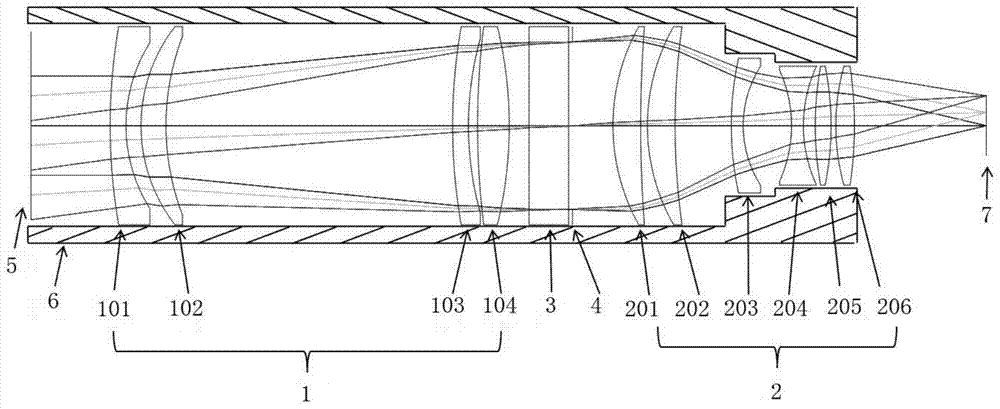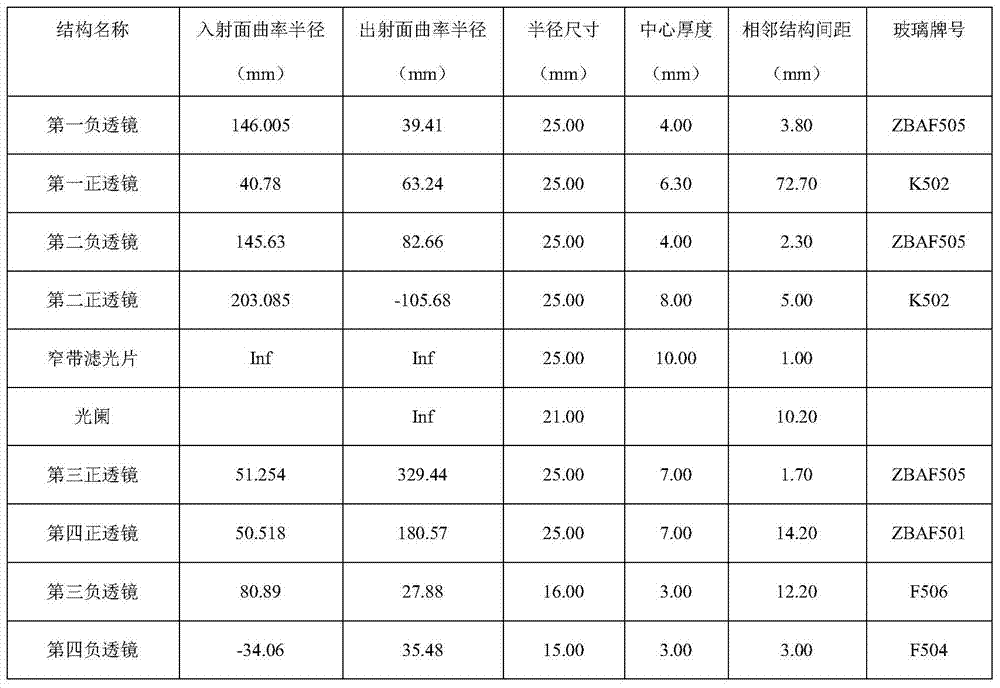A Lens for Narrowband Imaging Observation of Space Environment
A space environment, narrow-band technology, applied in optical components, optics, instruments, etc., to achieve the effect of eliminating spherical aberration and other aberrations and small distortion
- Summary
- Abstract
- Description
- Claims
- Application Information
AI Technical Summary
Problems solved by technology
Method used
Image
Examples
Embodiment Construction
[0018] A lens for narrow-band imaging observation of space environment according to the present invention will be described in detail below with reference to the drawings and embodiments.
[0019] Such as figure 1 As shown, a lens for narrow-band imaging observation of a space environment according to the present invention includes: a first lens group 1 , a narrow-band filter 3 , a diaphragm 4 , a second lens group 2 and a lens barrel 6 . The first lens group 1 , the narrow-band filter 3 , the diaphragm 4 , and the second lens group 2 are sequentially arranged in parallel in the lens barrel 6 along the incident direction of the light path. The first lens group 1 is used to adjust the incident light angle in the space environment, so that when the light enters the narrow-band filter 3, it meets the requirements of the incident angle, and cooperates with the narrow-band filter 3 to realize Narrow-band filtering: the second lens group 2 is used for re-imaging the light emitted b...
PUM
 Login to View More
Login to View More Abstract
Description
Claims
Application Information
 Login to View More
Login to View More - R&D
- Intellectual Property
- Life Sciences
- Materials
- Tech Scout
- Unparalleled Data Quality
- Higher Quality Content
- 60% Fewer Hallucinations
Browse by: Latest US Patents, China's latest patents, Technical Efficacy Thesaurus, Application Domain, Technology Topic, Popular Technical Reports.
© 2025 PatSnap. All rights reserved.Legal|Privacy policy|Modern Slavery Act Transparency Statement|Sitemap|About US| Contact US: help@patsnap.com



